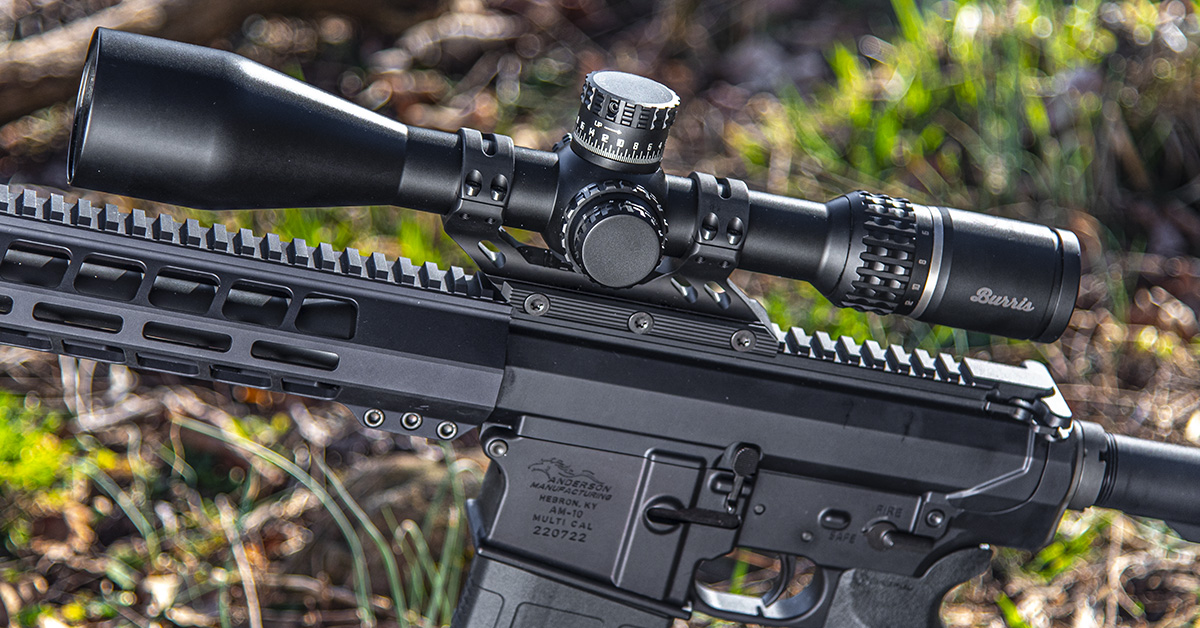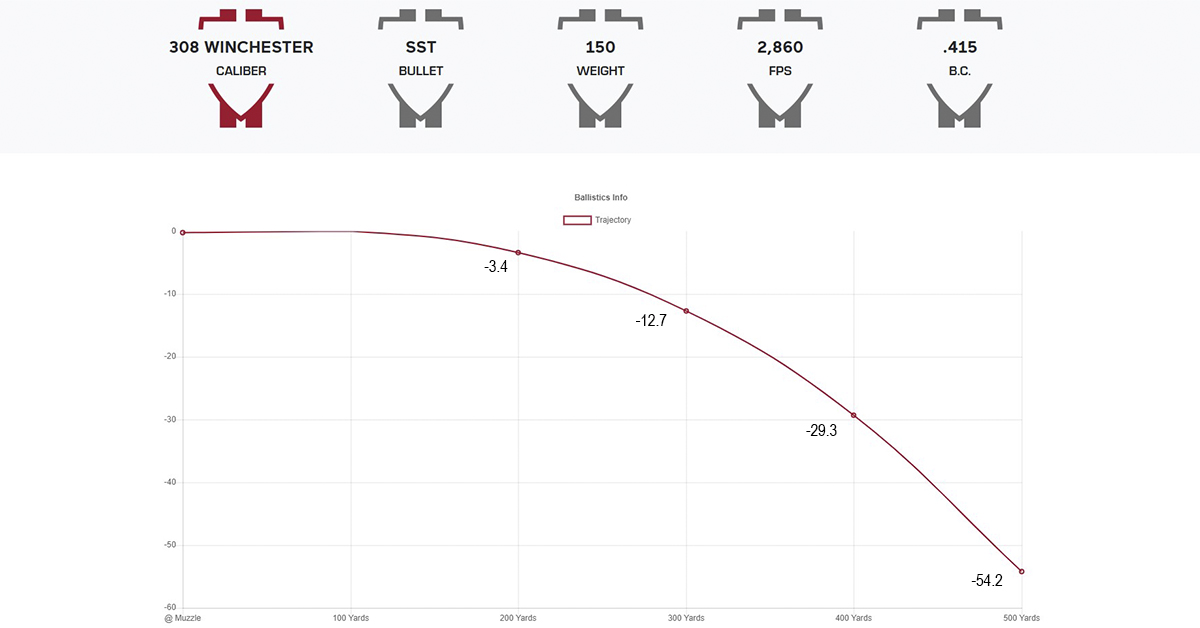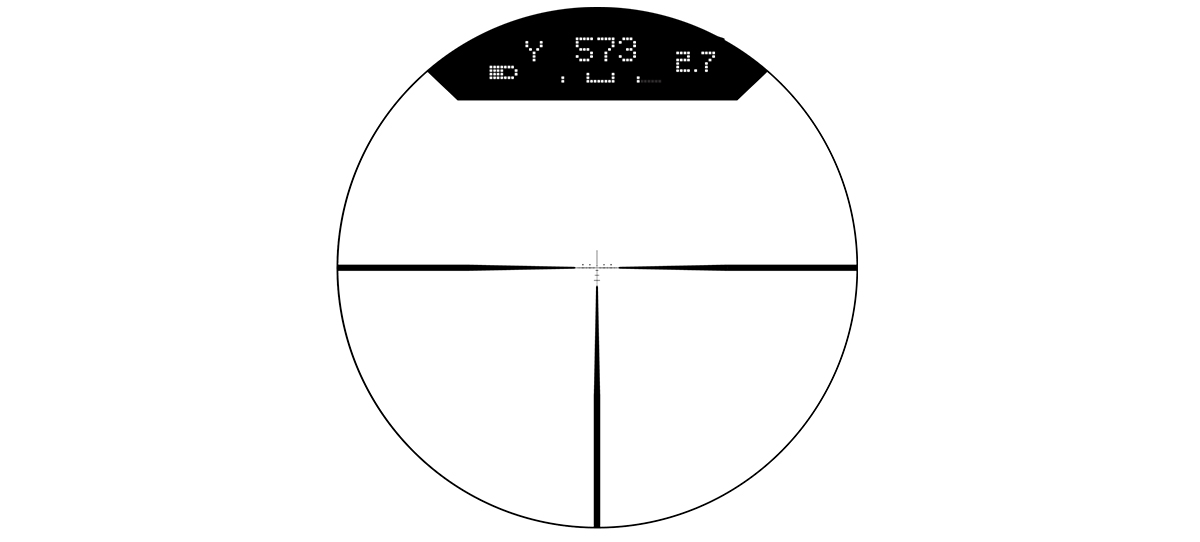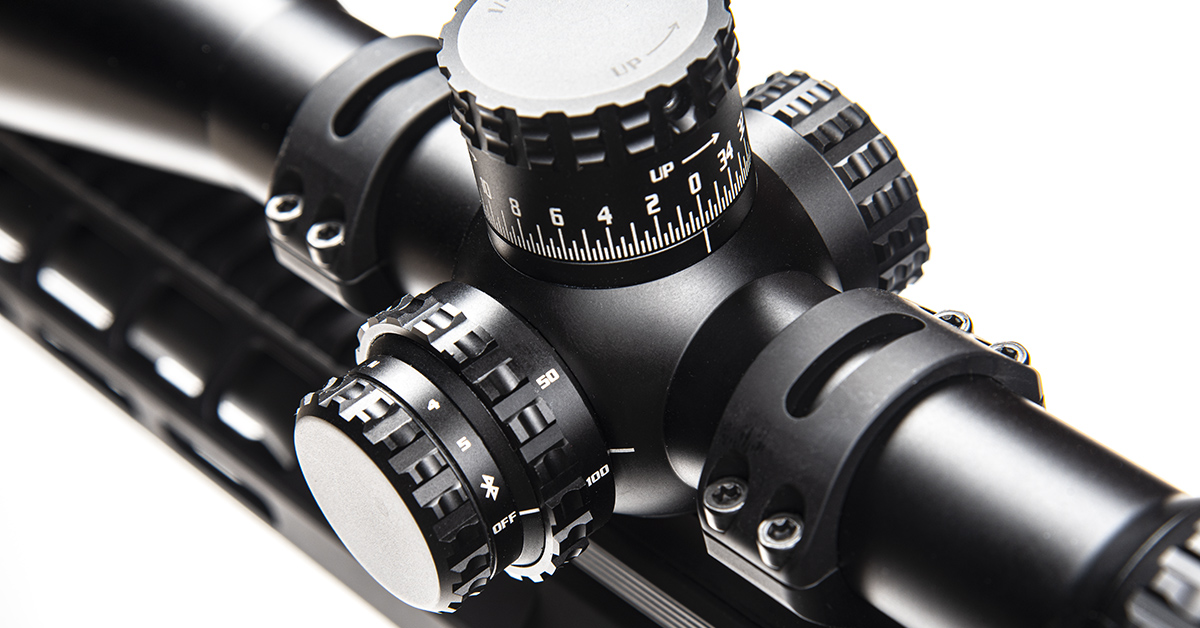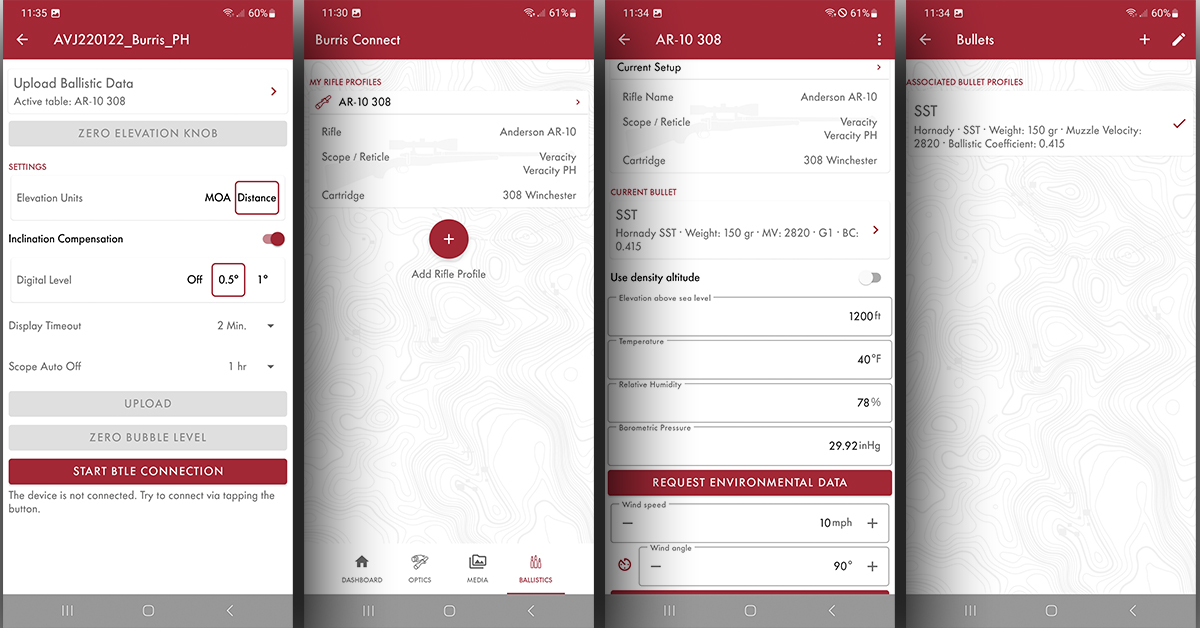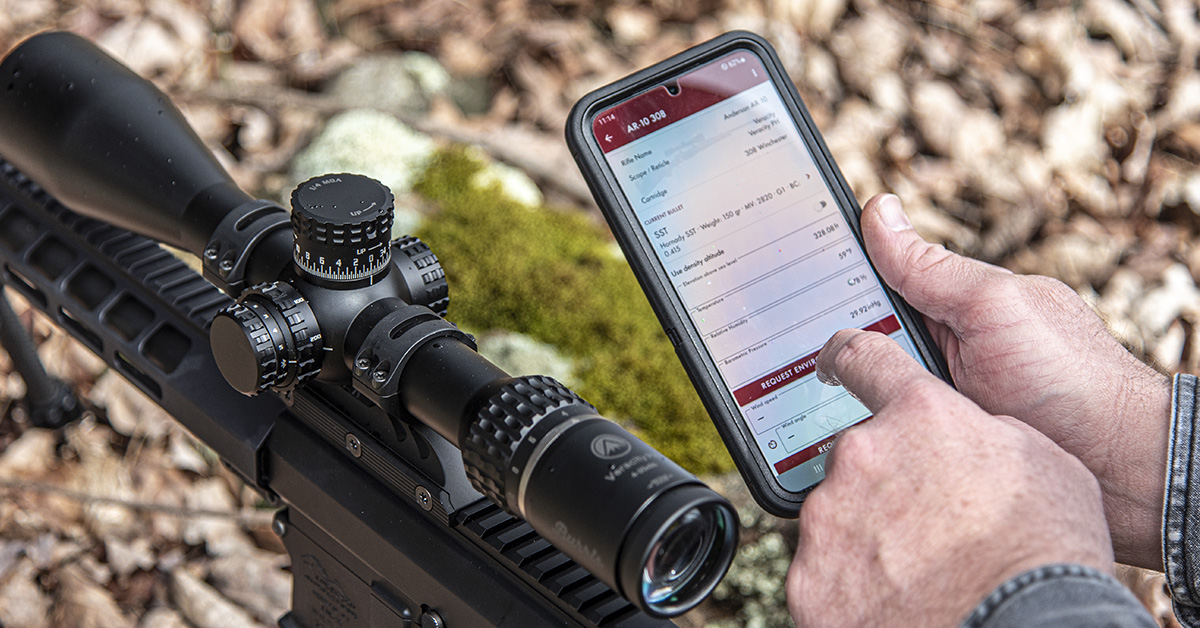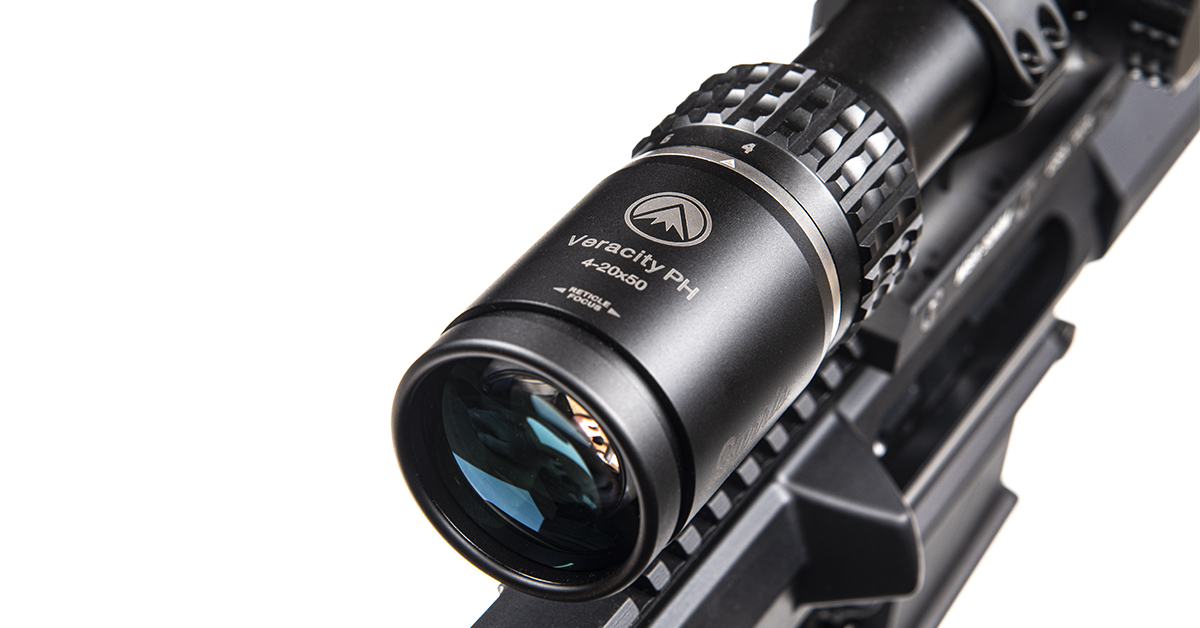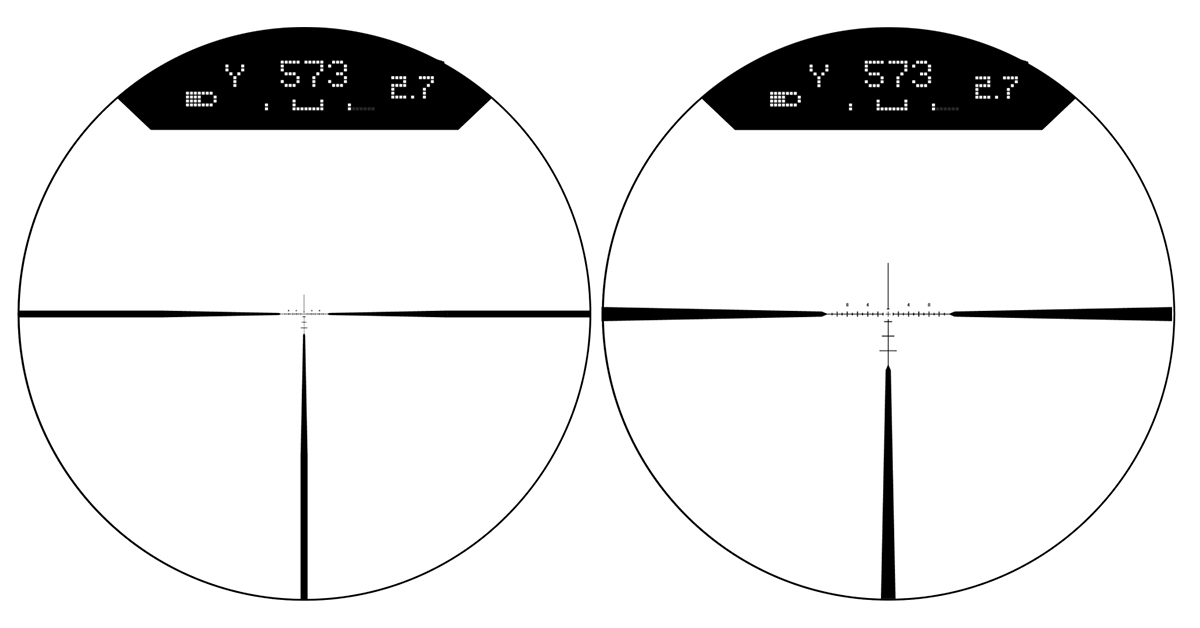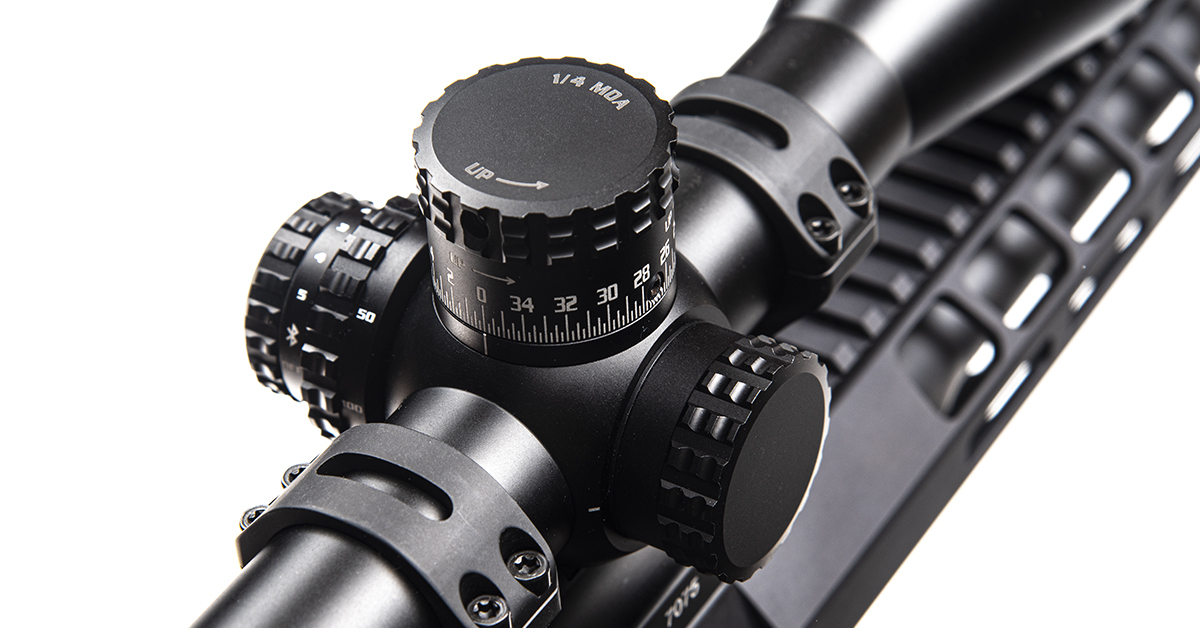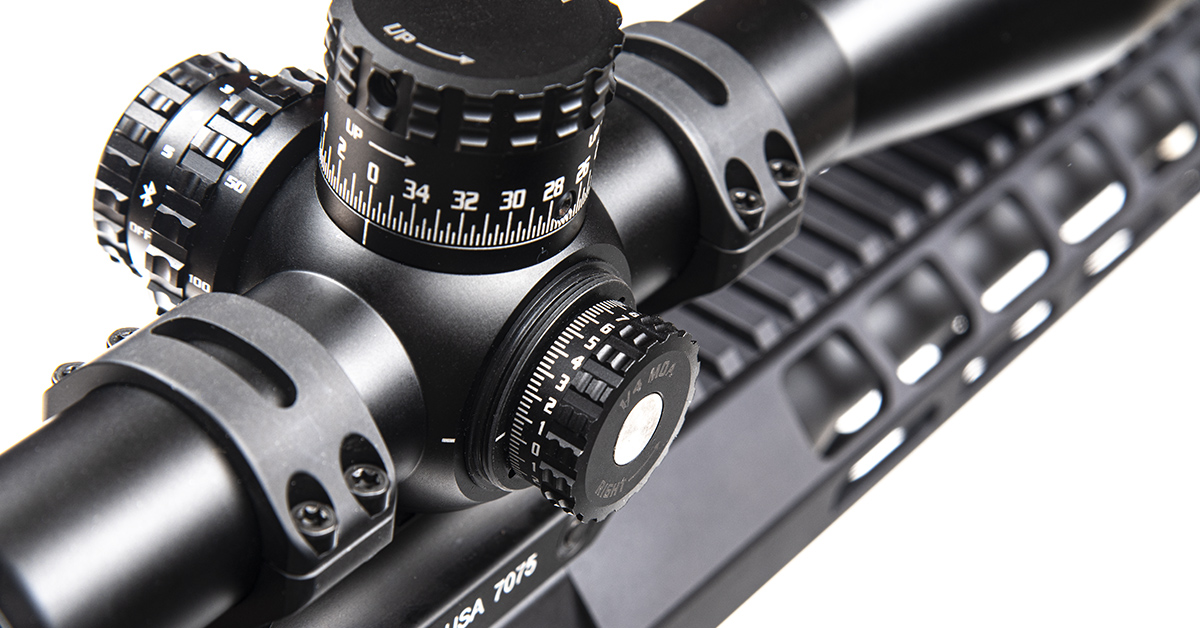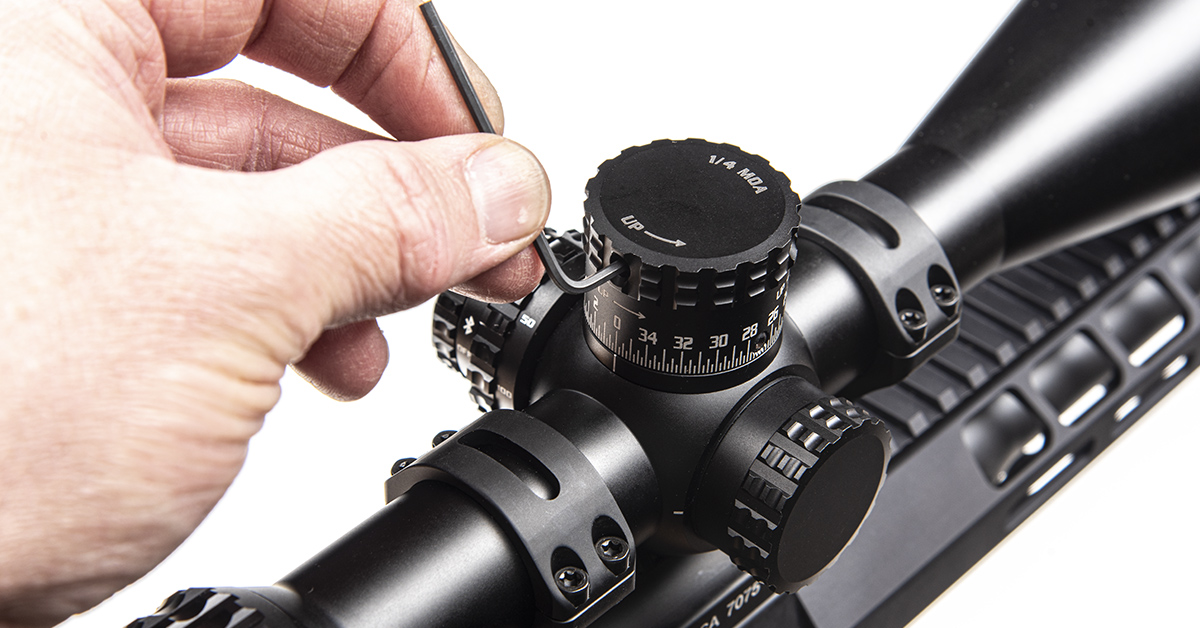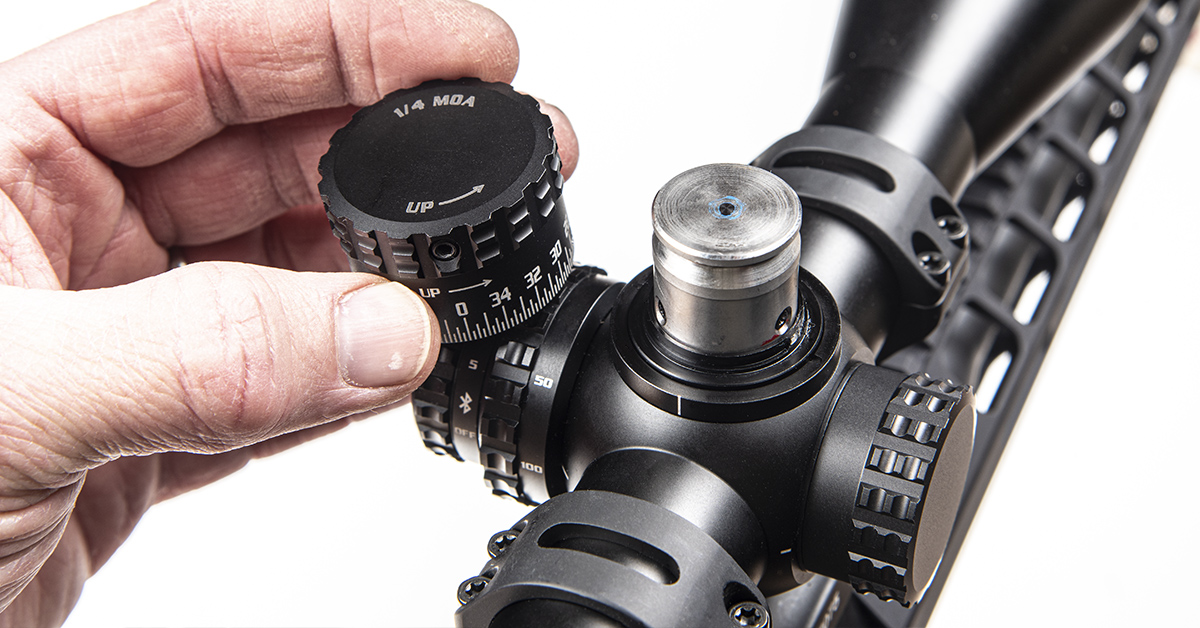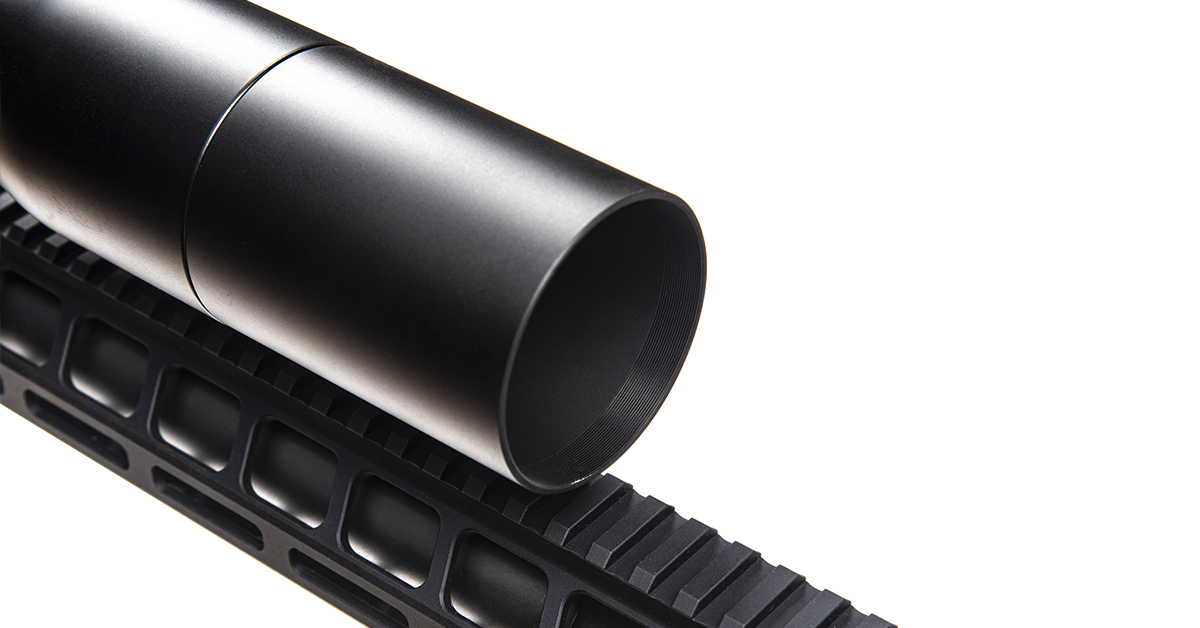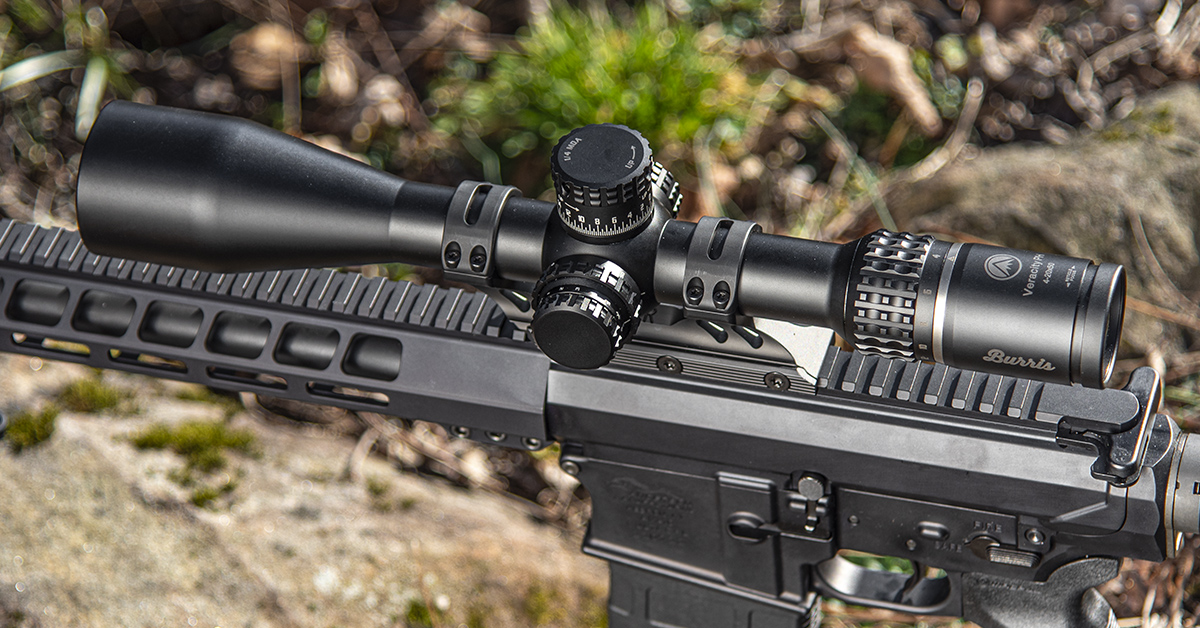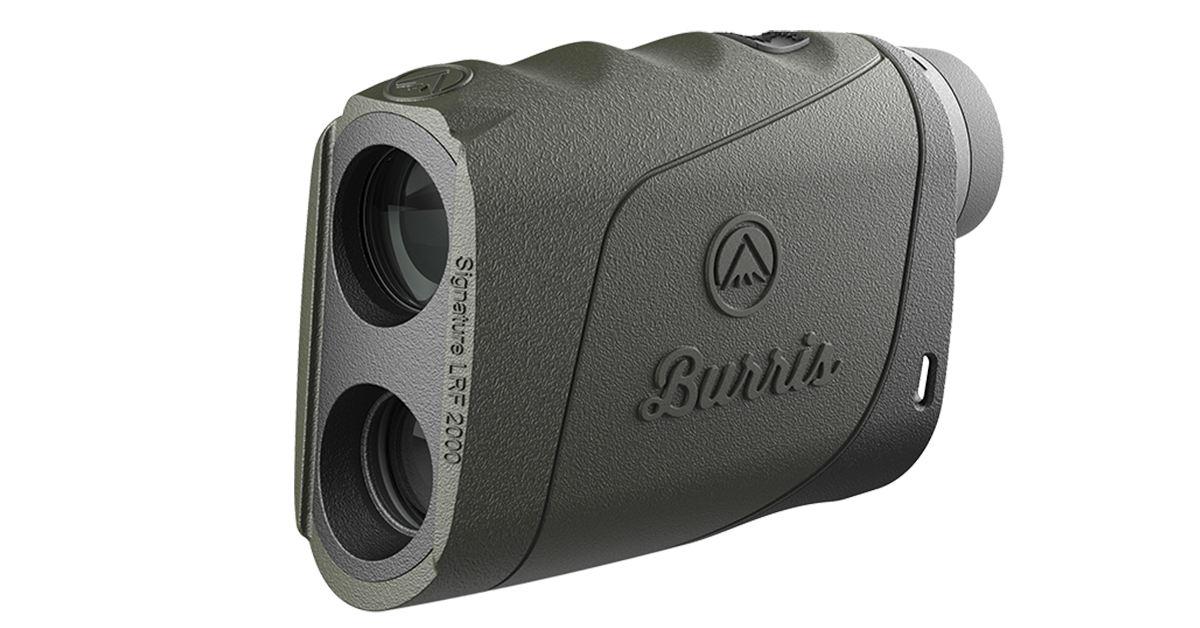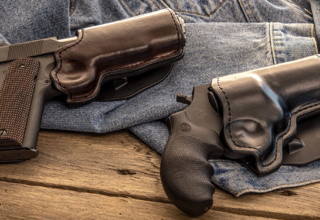With the new Veracity PH, guessing holdover, doing math, or running DOPE cards are no more. Now EVERYONE can adjust for bullet drop in seconds.
by Rob Reaser
Call me a tad jaded, but I often find it amusing that so many hunters get all excited about the advanced bullet drop compensation features of their rifle scope when I know full well that only a scant minority of these folks are capable of or will ever utilize said features. I’m not knocking the knowledge base or the skill set of the typical hunter when it comes to knowing how to quickly and efficiently compensate for bullet drop when shooting targets at stretched-out distances. Been there, done that, and I’m still not as proficient in ballistics management as I should be under real-world hunting conditions.
Guilty as charged.
For me, trying to dial-in compensation for bullet drop while engaging big game reminds me of taking a math test in my Junior High days. I would walk into class sort of thinking that maybe I might remember how to balance an equation since I spent a whole five minutes studying it the night before because Magnum P.I. was coming on the tube and, you know…teenage priorities. Then, once the test paper dropped on my desk and the pressure was on, panic and adrenaline set in and my mind turned to mush.
That might be a bit of an exaggeration, but it’s close to how I sometimes feel when trying to figure out holdovers or dialing in drop compensation when the pressure builds to get the critter on the ground before he disappears into the next wash. And I know most hunters are in the same boat.
“Hold on its back,” is the common advice for way-out-there shots.
Yeah…no.
If you’re going to take the long pokes, it is an ethical imperative to make sure you know where the bullet is going to hit before you pull the trigger. Successful “guesstimated” shots may make for good campfire tales, but they are certainly nothing to strive for.
The reality for most hunters is that the tools scope manufacturers make available to us are seldom fully utilized. Lining up on a bull elk that is 400 yards out and soon to disappear into the dark timber is not a moment when most of us are capable of critical ballistic calculations. Heck, I’m lucky just to keep my breathing under control and my wits about me.
The good news is that Burris has lifted that burden with their new Veracity PH 4-20x50mm rifle scope. The Veracity PH provides a spot-on aiming solution for long-range shots with no critical calculating required of the shooter. If you’re a Western hunter or your hunting excursions afford opportunities for longer-range shots, this scope may be just what you’ve been waiting for.
For those who have been operating under the “hold on its back” method of long-range shooting, let’s first provide a back-of-the-napkin understanding of how conventional rifle scopes with BDC reticles and target turrets solve the bullet drop issue. I’ll use the .308 Fiocchi Hyperformance round I’m currently shooting in my Anderson AM-10 Battle Rifle as an example. This cartridge is set up with Hornady’s SST 150-grain bullet and, according to the manufacturer, leaves the muzzle of their test barrel at 2,860 fps. Here’s what the trajectory looks like:
Assuming you’re aiming for a whitetail or mule deer, that “hold on the back” method falls apart real quick after 300 yards. To achieve a proper point-of-aim/point-of-impact result, one of two things must happen.
Method one is to adjust holdover by employing the scope’s BDC (bullet drop compensation) reticle. To use this method, you must become familiar with the reticle and understand which cross bar to use for a specific distance. Also, the reticle should be calibrated for the cartridge you are using.
Method two is to dial-in the drop. Here is where a target turret comes into play. Rather than adjusting for bullet drop by using a reticle-based holdover, you move the reticle by adjusting the scope’s elevation dial. This moves the reticle down (and the point-of-impact up) the correct amount so that you can aim using the reticle crosshair (intersection of the primary vertical and horizontal lines). To do this, you must know how much to raise the point-of-impact by turning the elevation knob for a specific distance.
Either method works, of course, but in the heat of battle, these are processes that can lead to poor results for the unpracticed shooter working under stress. And this is where Burris’ new technology comes to the rescue.
The Veracity PH is designed to eliminate all the potential confusion and hassle of adjusting your point-of-impact thanks to its dial-to-distance technology. This is an electronic rifle scope that incorporates a heads-up display (HUD) that is visible as you look through the scope. The above graphic illustrates the information displayed in the HUD.
Now, before you click out of here thinking, “That’s too much highfalutin’ technology for me,” trust me, it is VERY simple…and pretty darn slick. Here’s how it works:
- Range your target with a rangefinder (something you should always carry in the field).
- Rotate the scope’s elevation knob until the distance displayed in the HUD equals the distance ranged.
- Put the reticle crosshairs on your target and pull the trigger.
That’s it. No guessing, no math, and no confusion as to where to place the reticle on the target. Just range, dial, and shoot.
As you might expect, there’s a lot going on in the background for this to happen, but the Veracity PH really makes it that simple to get accurate point-of-aim/point-of-impact performance.
Still interested? Let’s take a deeper dive into how it all comes together.
Bullet Drop Compensation Made Easy
The Veracity PH has a multi-function dial on the left side of the scope. The inner dial provides the means of focus/parallax adjustment — a feature you certainly want for long-range shooting applications. The outer dial serves two purposes. First, it controls the reticle’s illumination levels (five different settings). Second, it controls the Bluetooth feature, which allows the shooter to program the scope’s custom settings and to upload ballistic data via the BurrisConnect app available free through Google Play and the App Store.
Ballistic apps are legion, and unless you are a serious long-range shooter or a techno geek, you’ve probably never used one or even bothered to investigate them. “Another unnecessary layer of complication to what should be an otherwise uncomplicated endeavor,” you might say. Well, in this instance, the Burris Connect app and Veracity PH scope combo are certainly worth the time invested.
Keeping it simple, the app lets you set up the scope to display data the way you want to appear on the HUD. You can have it display the dial-to-distance in yards, meters, or MOA. Inclination compensation can be turned on or off, the digital level can be turned on or off, angle increments adjusted, and you can set the display timeout and scope auto-off to your liking. Incorporated into the scope is a battery life icon and a digital bubble level with which you can ensure your line of sight stays directly above the bore line for enhanced long-distance accuracy.
Once you’ve customized the HUD display, you can use the app to set up your rifle profile, which includes the scope and reticle you’re using, as well as the cartridge the rifle is zeroed for. From here, things get really interesting.
The BurrisConnect app allows you to build a custom ballistic profile for the cartridge you are using. We can’t cover all the details here, but the important takeaway is that the data (bullet weight, bullet type, muzzle velocity, ballistic coefficient, environmental data, et cetera) are crunched by the app to calculate bullet drop for your specific load. Once the ballistic data is corralled, simply connect the scope to your mobile device via the Bluetooth feature and upload the data from your phone to your scope. After successfully uploading, the Veracity PH will allow you to dial-to-distance with the elevation knob, providing you with a precise aiming solution for the load and distance. If your target ranges at 378 yards, turn the elevation knob until 378 yards displays in the HUD. You are now ready to put the crosshairs on the vitals and pull the trigger.
Once you have uploaded the ballistic data to the scope, the app and Bluetooth function are no longer needed so long as you stay with that load. Change your load and you can create a new profile and upload that data to your scope. Easy peasy.
Of course, if you are the manual-type shooter and would prefer to compensate for bullet drop the old-school way, you can still do that with the Veracity PH. To each his own.
System Components
Burris currently offers the Veracity PH in a 5-power, 4-20x zoom range with a 50mm objective lens. I found the glass to be crisp and clear, featuring Burris’ Hi-Lume multicoating for low-light enhancement and glare reduction. Housed in a 30mm tube body, the scope boasts a power ring with aggressive block texturing that provides a sure grip to change magnification settings without the need for a throw lever.
The reticle is the Burris Wind MOA FPP designed specifically for the Veracity PH. As you can tell from the above illustration and the name, the Veracity PH utilizes a front focal plane, which means that as you increase magnification, both the target and the reticle image increase in size. It is a relatively simple design with 1 MOA tick marks for holdover and wind hold-off should you wish to use them. Wind hold-off is also part of the HUD data (denoted in MOA to easily correlate with the reticle). Burris says the reticle is calibrated for “the average big game caliber” with the lines along the vertical crosshair denoting 200-, 300-, and 400-yard holdovers when zeroed at 100 yards.
The elevation knob is a target turret design that utilizes a 1/4 MOA rotation scale. That is, however, somewhat deceiving because the knob is actually more precise than that. Burris calls this their Programmable Elevation Knob (PĒK). It is “clickless” and has a mechanical adjustment graduation of 1/10 MOA. That level of precision is what allows the shooter to dial to the exact ranged distance and thus ramp up the precision factor several notches compared to the more traditional 1/4 or 1/2 MOA scope graduations.
Unlike the PĒK, the windage knob is capped. Both provide zero-turn stop adjustment so you can easily return to zero. The included instructions explain the mechanical zeroing and zero-stop adjustment process in an easy-to-understand manner.
Three set screws secure the elevation cap to the turret. Loosen these to remove the cap.
The turret beneath is a robust unit. Once the scope is zeroed, simply remove the cap and align the scale’s “0” to the alignment mark on the scope body and snug the set screws.
Included with the Veracity PH is an extended sun hood that screws onto the objective bell.
In sum, the new Veracity PH 4-20x50mm rifle scope is a remarkable piece of technology and a welcome lifeline for hunters who have the skills and hardware to take those long shots but aren’t adept at calculating bullet drop or wind hold-off when the pressure is on. With its ability to accurately dial-to-distance, the days of, “Just hold on its back,” are well and truly over.
Burris Veracity PH 4-20x50mm Specifications
- Magnification: 4-20x50mm
- Objective Lens Diameter: 50mm
- Tube Diameter: 30mm
- Field of View (Low to High @ 100 yards): 26 – 5.5 ft.
- Eye relief (in.): 3.5 – 4.25
- Exit Pupils – Low / High (mm): 12 – 2.5
- Diopter Setting: +2 to -3
- Reticle Plane: Front
- Display Plane: Rear
- Reticle: Wind MOA FFP
- Display Illumination: Rotary Dial, 5 illumination settings
- Battery: CR 2450 x2
- Length (in.): 15
- Weight (oz.): 27.2
- Elevation Turret Marking Graduations: ¼ MOA
- Elevation Turret Digital Resolution: 1/10 MOA
- Total Elevation Adjustment Range*: 66 MOA
- Elevation Turret Travel Limit**: 33.8 MOA
- Windage Turret Graduations (Clicks): ¼ MOA
- Total Windage Adjustment Range*: 37 MOA
- Windage Turret Travel Limit**: 24 MOA
- Parallax Focus: Side Focus
- Parallax/Focus Range: 50 Yd. to Infinity
- Operating Temperature: -20° to +140° F
- MSRP: $1,200
* Example: 50 MOA total adjustment range equates to roughly 25 MOA in either direction from center
** Rotation-limited dial (12 MOA left or right from zero position)
A Needful Companion
Along with the Veracity PH rifle scope, Burris recently introduced their Signature 2000 LRF rangefinder. Capable of ranging from 5 to 2400 yards, the Signature 2000 LRF packs a lot of tech into a tidy package.
The rangefinder offers three ranging modes: auto, sport, and hunting, depending on your situational needs. There is also a continuous measurement, or scan, mode that allows you to maintain continuous ranging on a moving target. Five illumination levels help you match the scene and ambient light for optimal viewing.
Another feature we like is the ability to present multiple distance options in the display to ensure you are receiving the precise ranging for the terrain you are hunting. These include LOS (line-of-sight distance), HOR (horizontal distance), LOS and HOR, LOS and ANG (line-of-sight and the +/- angle), and HOR and ANG (horizontal distance and the +/- angle).
The Signature 2000 LRF is nitrogen-filled for waterproof and fog-proof performance, and comes housed in a rubber armored chassis. The 7x magnification makes it easy to zero in on those long-range targets. MSRP is $360.

